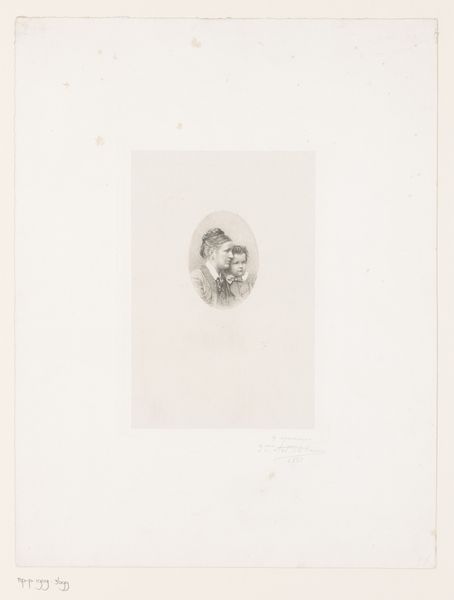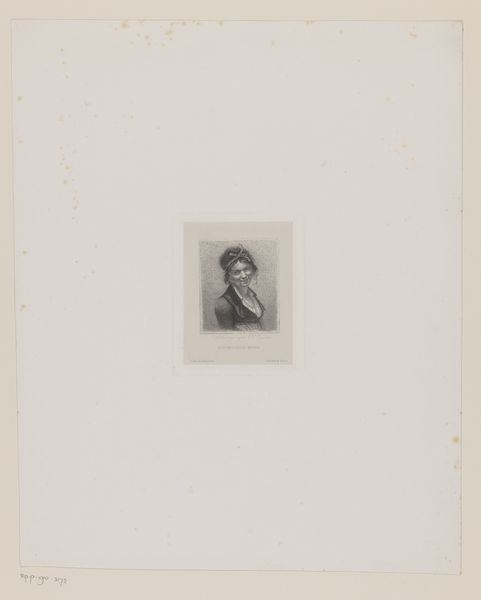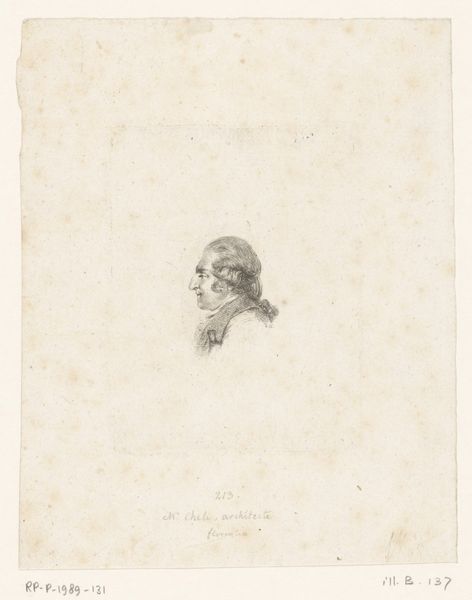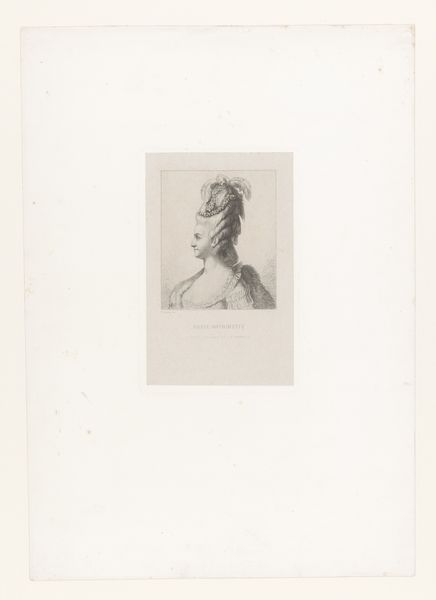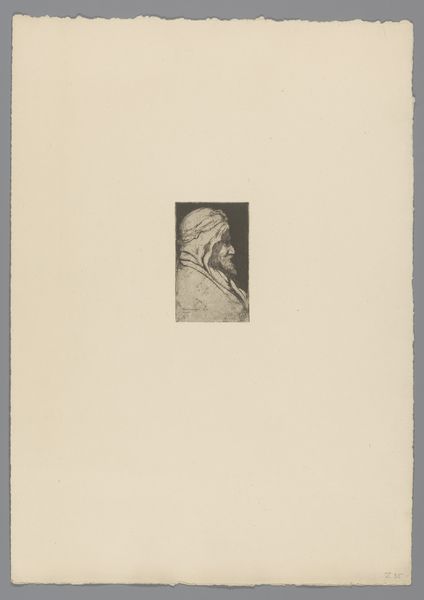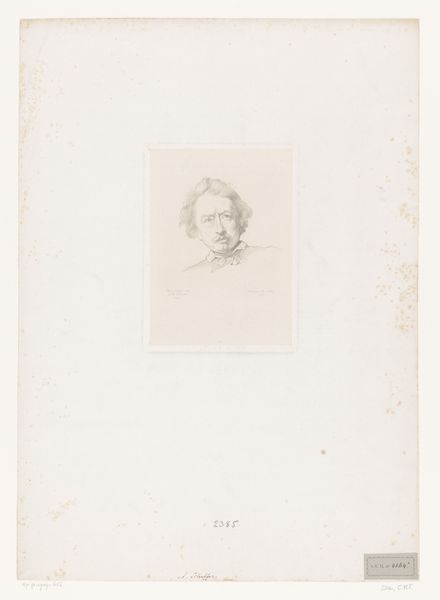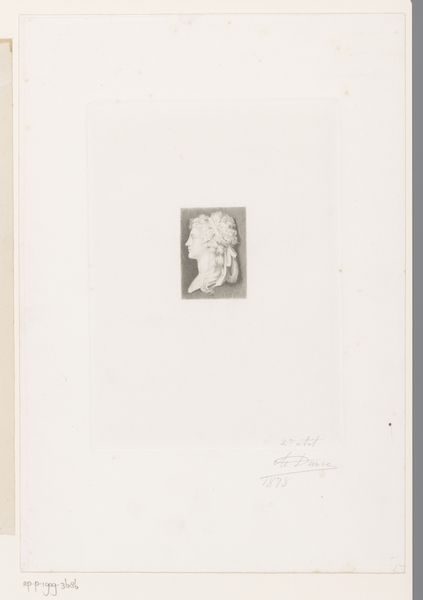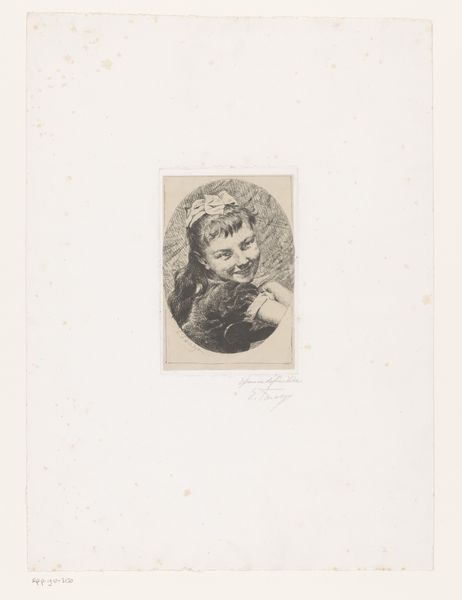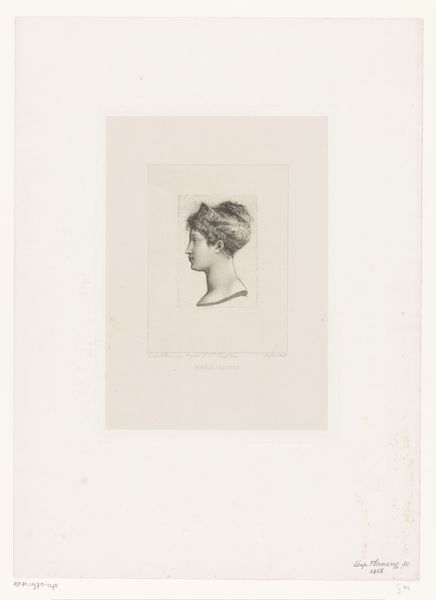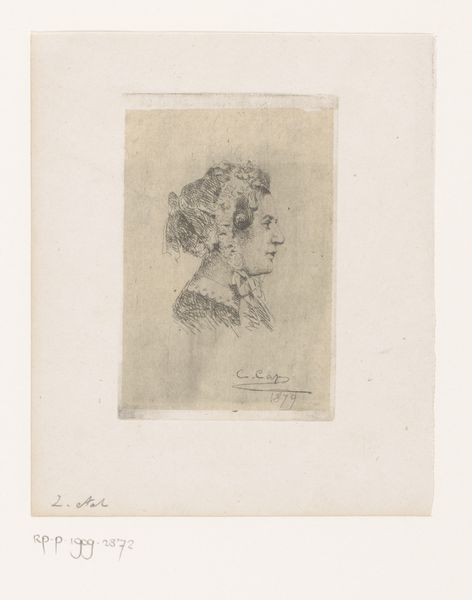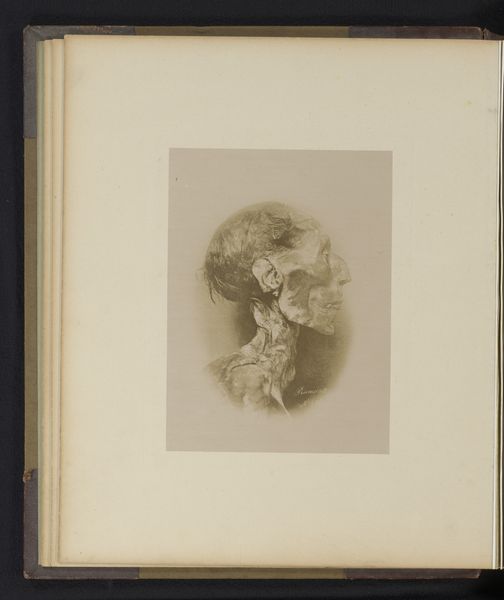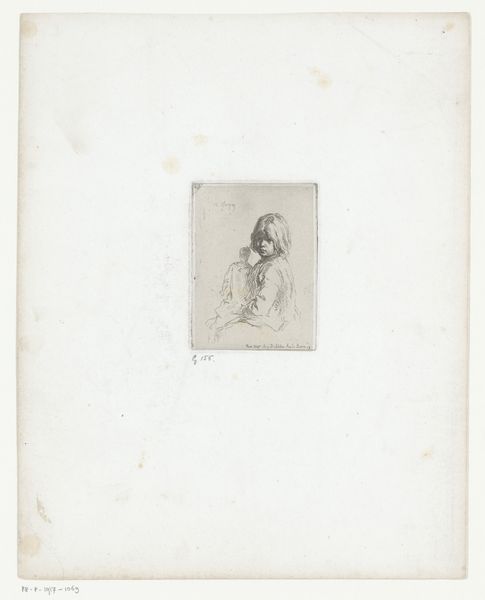
drawing, print
#
portrait
#
drawing
# print
#
academic-art
Dimensions: height 208 mm, width 148 mm
Copyright: Rijks Museum: Open Domain
Curator: This is Léopold Flameng’s "Portret van Marie d'Agoult," created in 1860. It's a drawing, reproduced as a print. Editor: There’s a delicacy here. It's rendered in soft grayscale tones, capturing the sitter’s profile. What strikes me most is the ethereal quality. Curator: Marie d'Agoult was a writer, known as Daniel Stern. She was a central figure in Parisian intellectual circles, known as much for her own writing as for her scandalous liaison with Franz Liszt, which produced three children including Cosima, who would later marry Richard Wagner. Editor: Yes, it resonates with romantic ideals and perhaps the fashionable salon portraiture of the time. Her gaze, while fixed, exudes a certain introspective melancholy, reinforced by the gentle gradation of tone suggesting light and shadow. It reminds me of classical busts and cameo. Curator: Flameng situated his career within the traditions of Academic art, so there is a nod to Neoclassical portraiture. But considering d’Agoult’s radical politics and intellectual life, this demure rendering almost does a disservice to her complex character. D'Agoult wrote about the 1848 Revolution, critiquing both republicanism and socialism from a position that we might now see as advocating for a more socially responsible liberalism. Her engagement in politics suggests a level of personal ambition rarely associated with women. Editor: The artist really directs your eye through tonal variation. The slight, almost hesitant lines tracing her features give it an air of fragility, in an aesthetic language familiar in images of women at this period. But, perhaps ironically, we're discussing her intellect, while analyzing this two-dimensional image of her surface appearance. Curator: Precisely, so this is a prime example of how images can mask more than they reveal, or rather, prompt a necessary layering of social and historical readings to enrich our interpretation. Considering what d’Agoult achieved despite considerable obstacles, it is crucial we reflect on the systemic barriers imposed on women in her time. Editor: An essential consideration for the twenty-first century art audience. Thinking purely of technique, though, this portrait succeeds wonderfully, but leaves you feeling slightly unsettled because of the tensions between the historical subject and representation of her on paper. Curator: Thank you. Considering d’Agoult's accomplishments and circumstances, it is necessary to think about images critically. Editor: My pleasure. It's always stimulating to view form and context together.
Comments
No comments
Be the first to comment and join the conversation on the ultimate creative platform.
